The peepal plant, or Ficus Religiosa, is a beautiful tree with heart-shaped leaves. To care for one, you should plant it in loose soil with good drainage, with access to direct sunlight. Then, water it occasionally.
There’s much more to know when growing your peepal plant at home.
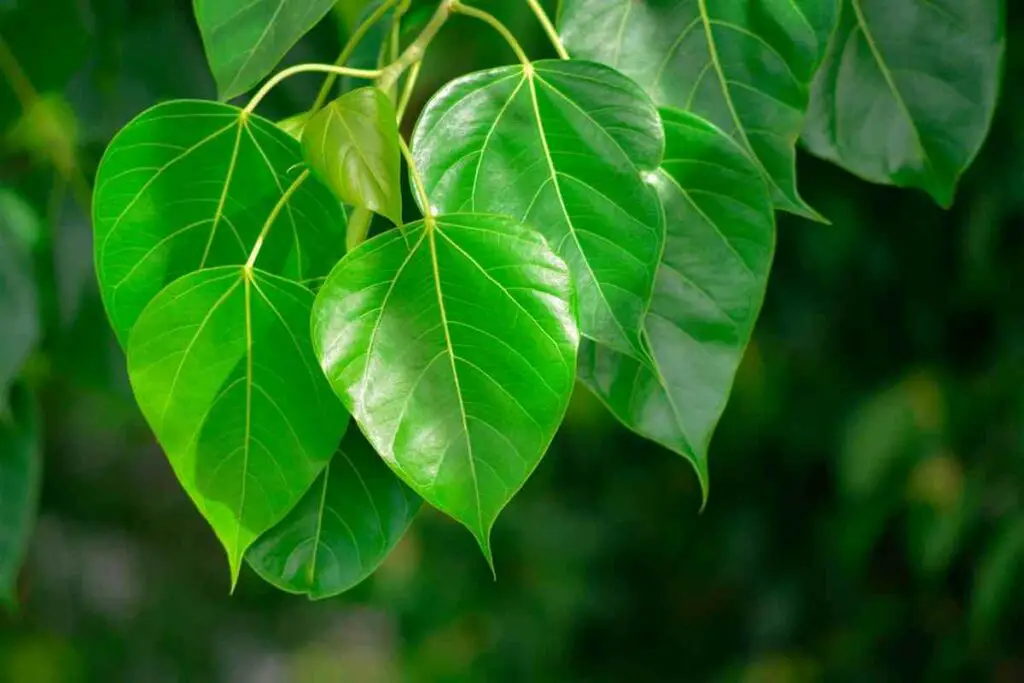
This growers’ guide covers everything, so make sure to keep reading.
Table of Contents
How Do I Take Care of a Peepal Plant?
If you take care of your plant, it will grow into a stunning tree with rich, green leaves.
Caring for a peepal plant isn’t hard, but you will want to develop a reliable care routine for it.
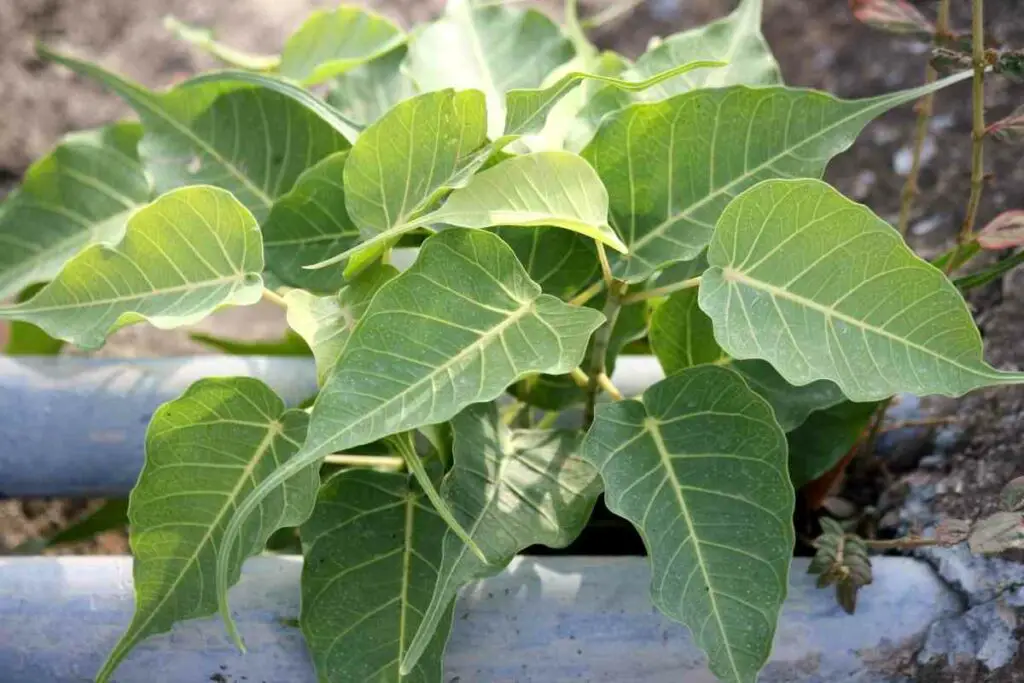
Let’s cover the care basics, then go over them in more detail:
- Soil: Loose with good aeration.
- Light: Prefers direct sunlight, but partial shade is sometimes fine
- Temperature: 77-95°F (25-35°C)
- Humidity: 40% to 80%
- Water: Minimal watering only when the soil is parched
- Potting: Prefers clay pots
If you follow all these conditions, your peepal plant will thrive.
The plant does prefer humid, warm weather, so you should never leave it outside when it’s going to drop below freezing. Overall, it’s a plant that’s straightforward to care for.
What Soil is Best for a Peepal Plant?
Getting the correct soil is essential when trying to grow a peepal plant.
You want the soil you use to be well aerated and loose. If it’s compacted too tightly, the roots struggle to breathe, which can cause your plant to wither.
Good soil drainage is also important.
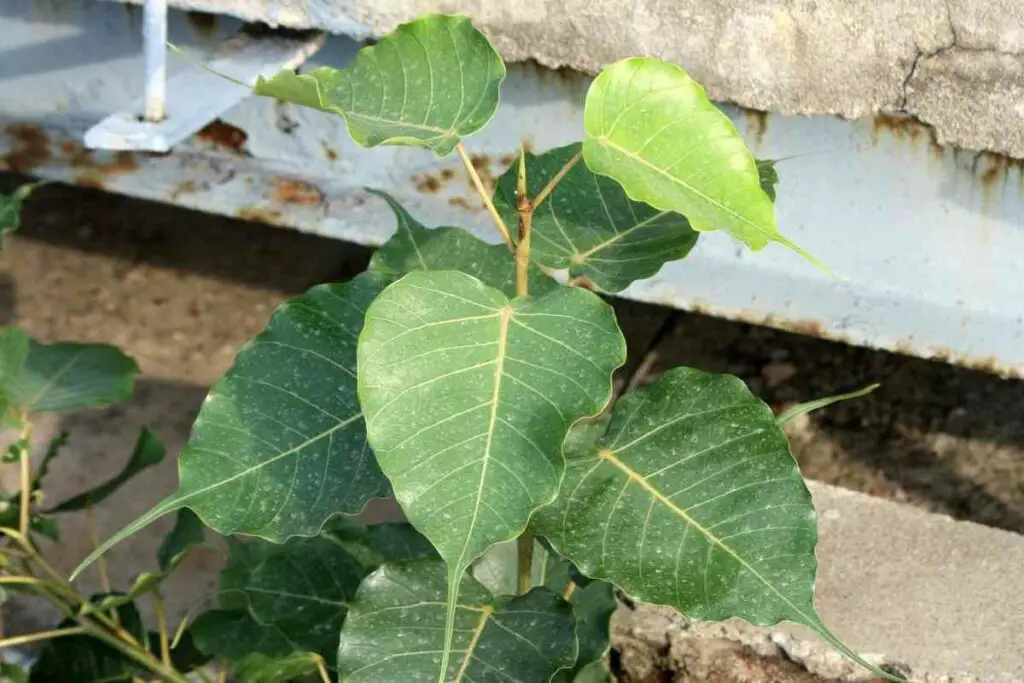
If you don’t have loose soil at home, you can always make potting soil less compact by adding:
- sand
- vermiculite
- perlite
- or sphagnum peat moss
Doing so forms more air pockets in the potting soil, making it much better suited for peepal plants.
The peepal plant grows in very hot environments, so you can replicate that with dry and loose soil.
Replicating these conditions for your sapling will help it adapt and grow wherever you live.
What Lighting is Best for a Peepal Plant?
Your peepal plant wants direct sunlight, which you can easily provide by putting the plant outside or in a window.
It grows rapidly when the plant is in the sun for at least six hours per day. So, you can help your plant become a tree much faster by ensuring it gets the sunlight it needs.
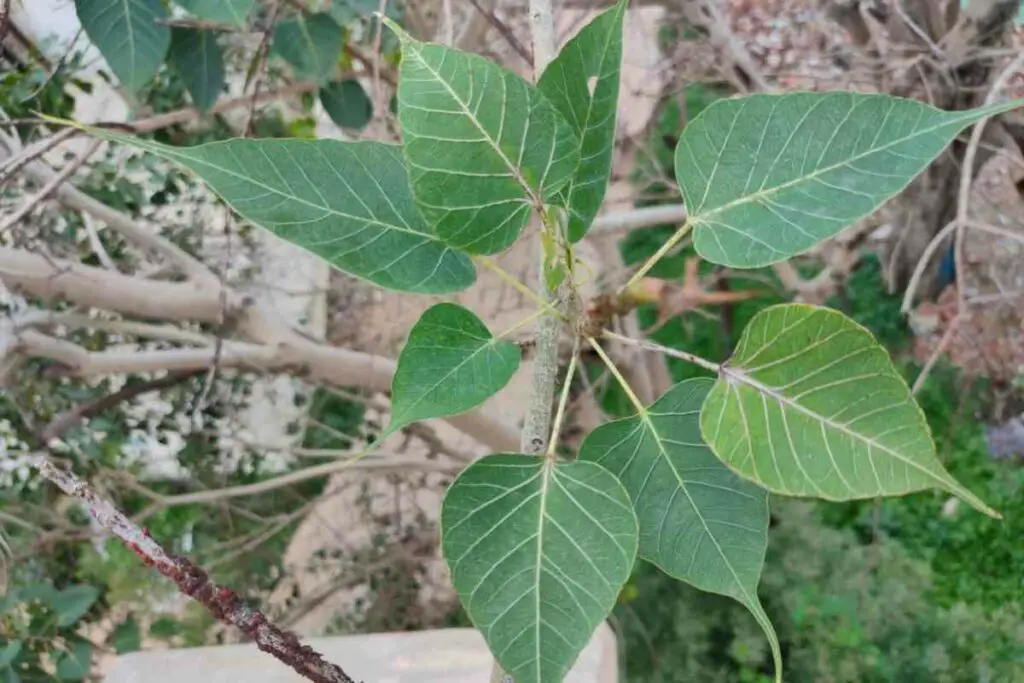
Peepal plants also do fine in partial shade, although they won’t grow nearly as quickly.
However, your plant will start dropping leaves if it doesn’t get enough light daily.
That means you must find a good balance of sunlight when leaving the plant in partial shade.
In Short – Direct sunlight is best for your peepal plant. You can leave it in a window or even use a grow light when you have to bring the tree indoors.
What Temperature and Humidity Conditions are Best?
Next, you must provide your plant with temperature and humidity conditions that help it thrive.
The peepal plant is part of the Ficus family, so it’s a tropical plant that enjoys warm, humid weather.
The best growing environment would be between 77-95°F (25-35°C).
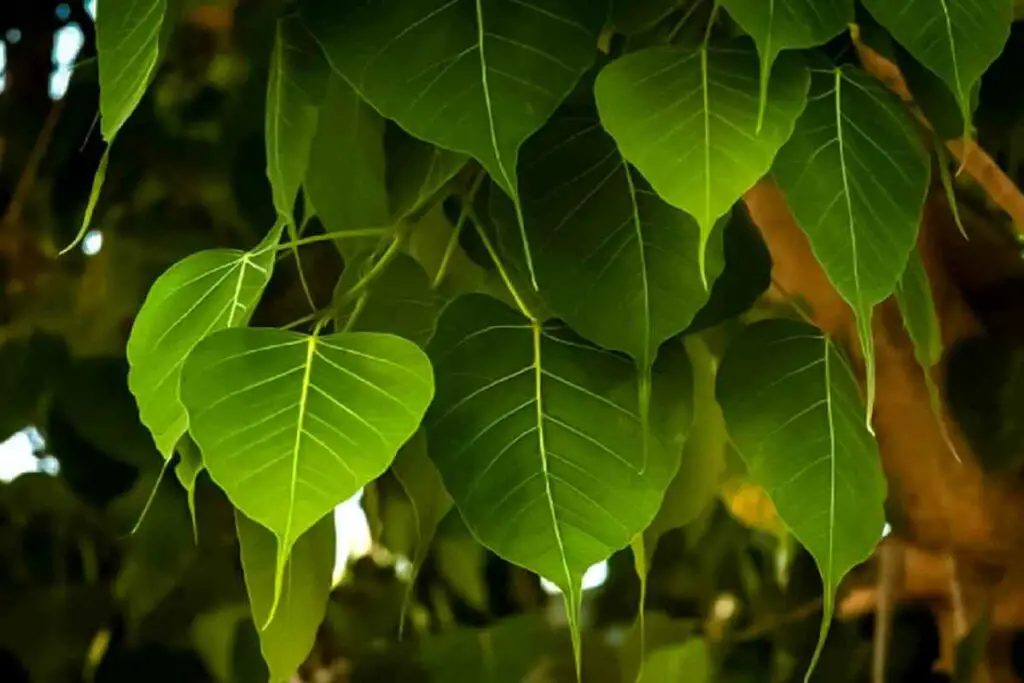
If it gets too cold, the peepal plant will start to die, so always bring it inside if you suspect it will go below freezing during the night.
The plant grows until it gets colder than 50°F(10°C) outside. So, if you want a large tree, keep it above that temperature.
For Humidity – You want to keep it between 40% and 80%. The more humidity, the better! Your peepal plant will grow significantly faster if you keep the humidity closer to 80% than 40%.
Overall, these trees do very well in hot, humid places.
When Do I Water a Peepal Plant?
Peepal plants can thrive in tough conditions, so they don’t need a lot of water.
In fact, you can easily drown them by giving them too much to drink.
Instead, you’ll need to check the soil before watering the plant and only give it water when the soil is very dry and slightly crumbly.
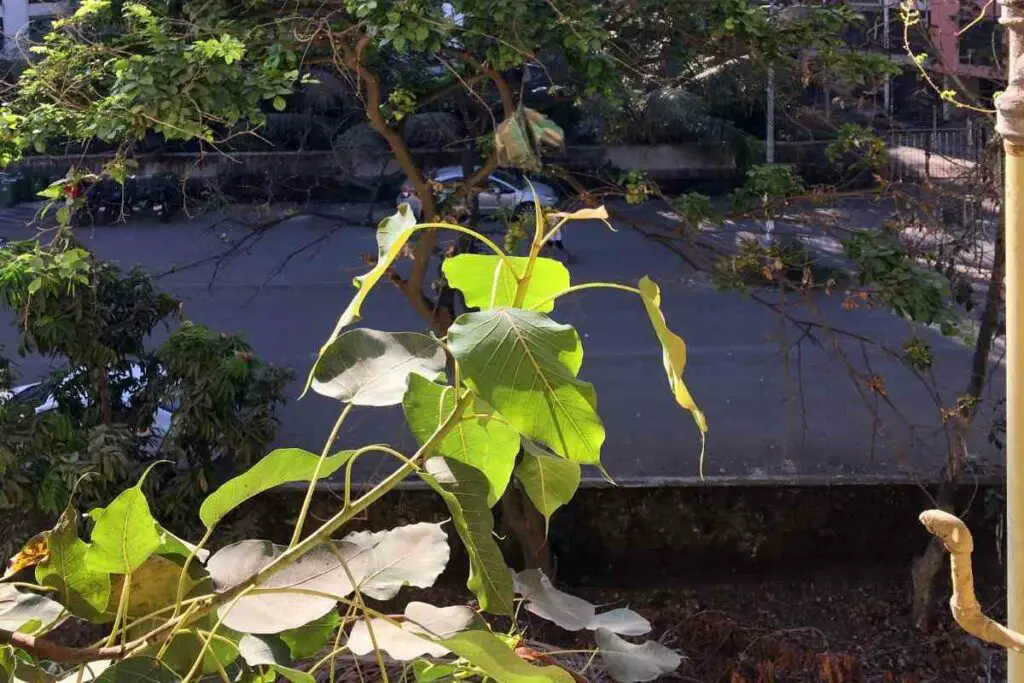
Then, give the plant ample water while ensuring it doesn’t sit in the pot or on the ground. You want the soil to drain well so the tree doesn’t become overwhelmed with water.
The leaves become dull, brown, or saggy if you overwater the plant.
Stop immediately when you see these signs and give the plant’s soil time to dry back out.
Usually, the plant does best when you water it only once per week, with minimal water.
Did You Know? Most people water their peepal plant on Thursday while avoiding doing so on Sundays because they believe it will cause them to lose money.
Why Should I Use a Clay Pot?
The peepal plant does much better in clay pots than in plastic ones.
The plastic can stop airflow, which causes stress to the roots. Plastic pots also make root rot a stronger concern with these plants.
The best pot would consist of clay, is large, and has ample drainage.
Your peepal plant won’t last very long without drainage holes in the pot.
Many people consider the pot essential when growing their trees, so ensure you get one that can easily hold up a large peepal tree without tipping over.
The clay pots work the best because they’re more porous than plastic. This feature allows more air to make its way into the clay pot, which peepal plants love.
Are There Common Peepal Plant Problems?
The peepal plant is very hardy— and is nearly immune to catching many diseases.
Plus, it won’t have any problems dealing with pests without your intervention. Peepal plants even survive droughts easily, so dry spells won’t be a problem.
However, overwatering can be a huge problem for many peepal plants.
The leaves will shed, which can ruin the health of the plant. Since it’s sensitive to water, you must be careful with watering your plant.
Many people also worry about curling leaves. Although, it’s usually not a problem for peepal plants, and you may see curled leaves from time to time.
They usually do this when the leaves become too hot in direct sun, but it doesn’t mean anything’s wrong.
To Summarize – Peepal plants are extremely hardy, so you shouldn’t worry too much about them. They do best in tough conditions and won’t have many issues, making them perfect for growing your first tree.
How Do I Propagate a Peepal Plant?
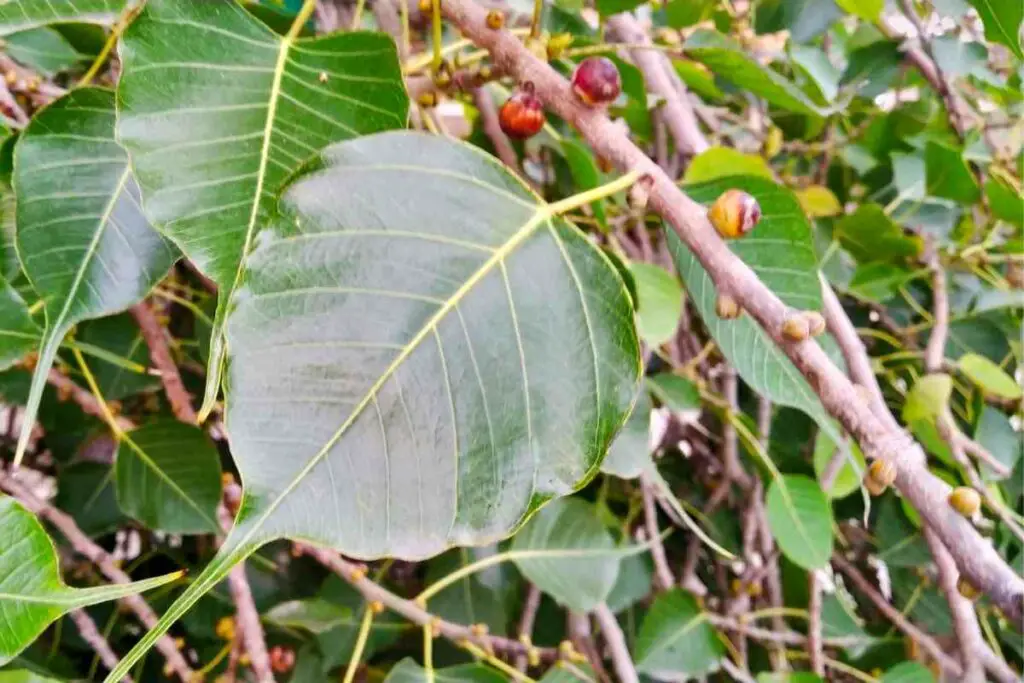
You can easily propagate a peepal plant by:
- Taking some cuttings from the tree and sharpening the bottoms at an angle.
- Next, bury the cuttings in a pot full of loose, dry potting soil and gently push the soil down to compact it slightly.
- Water the cutting and wait for a few weeks, only watering it when you notice the soil is very dry.
- Then, you’ll want to store the pot somewhere mostly shady.
- As the cut branches form nodes and leaves, you can move it into direct light and take care of the new peepal as you normally would.
The cuttings form roots in the soil over time, allowing you to make multiple peepal trees from a single source.
It’s much easier to grow a peepal from a cutting than growing one from a seed!
Conclusion
The peepal plant, or Ficus Religiosa, is a beautiful tree with heart-shaped leaves.
The growers basic, for more individual details please read article above. If you follow all these conditions, your peepal plant will thrive.
- How to Dry Basil Leaves: A Professional Guide
- Is an Avocado a Fruit or Vegetable? Simple Answer and Explanation
- Does Pineapple Have Seeds? Exploring the Anatomy of Pineapples
- Blooming Through Winter: Can I Grow Vegetables Indoors in the Winter?
- What Can You Grow in a Greenhouse All Year Round: A Guide to Year-Round Greenhouse Gardening
- Are Blueberries Blue? Debunking the Myth of Their Color

















